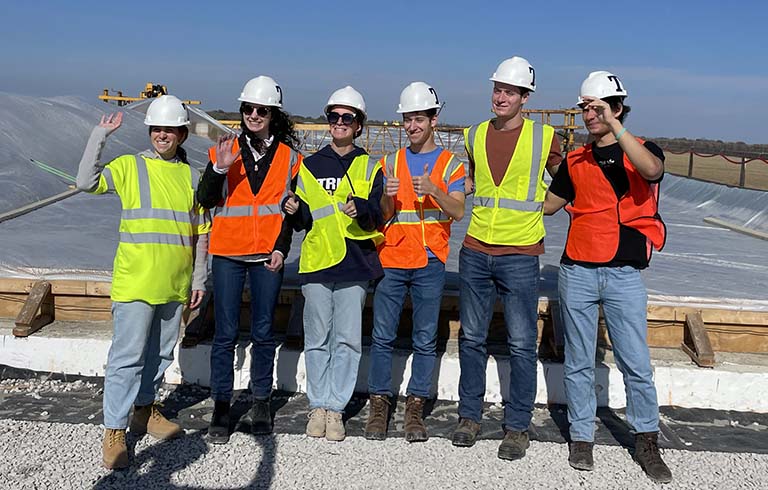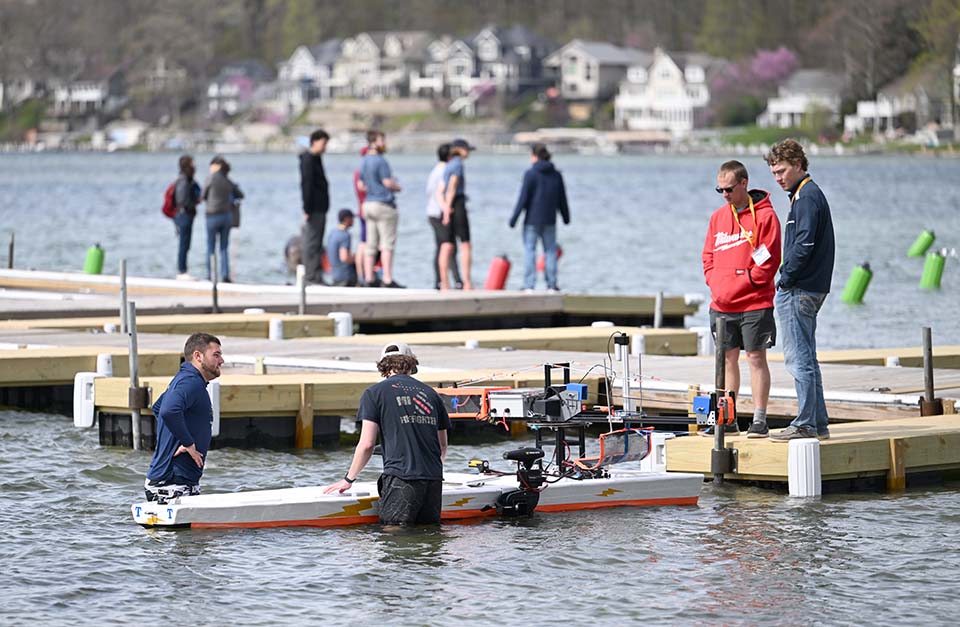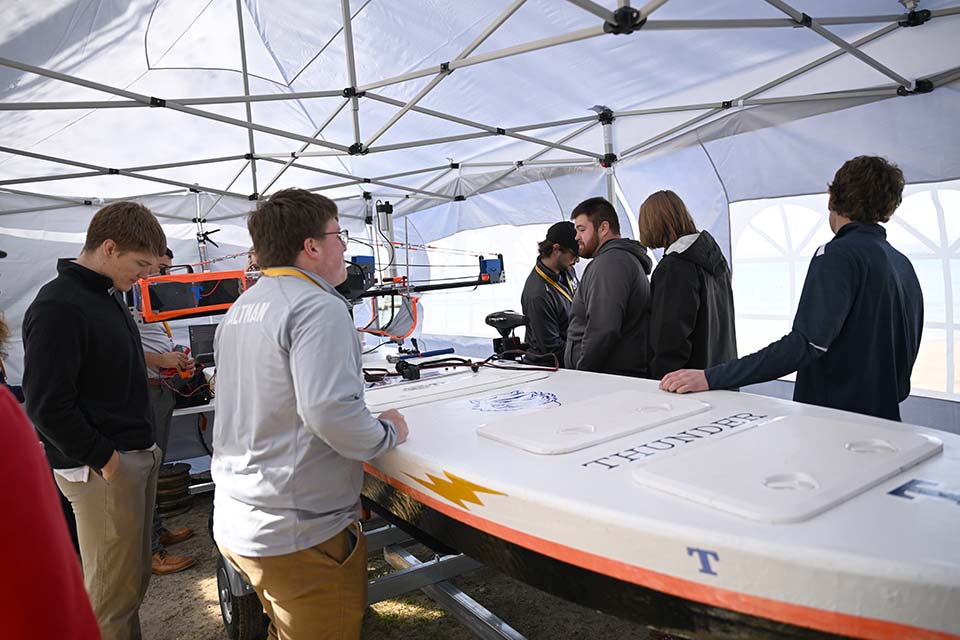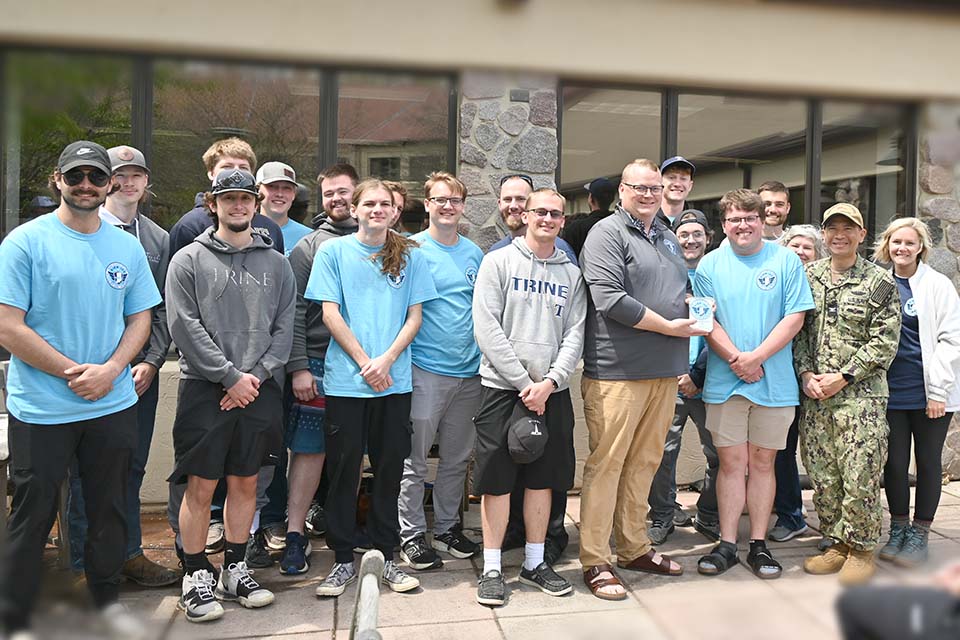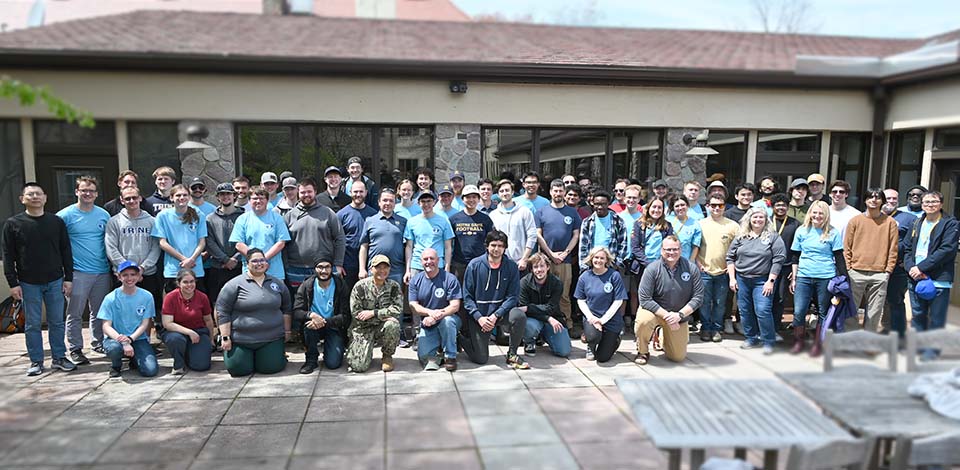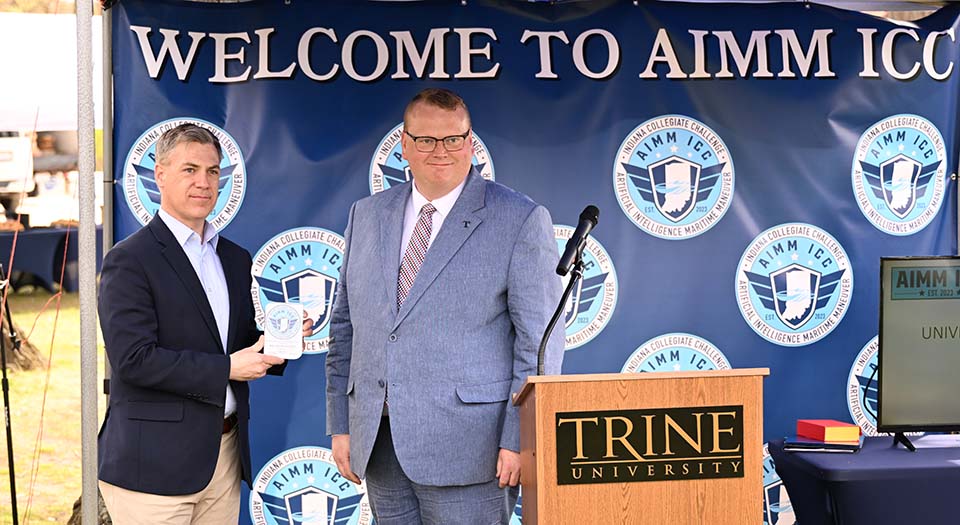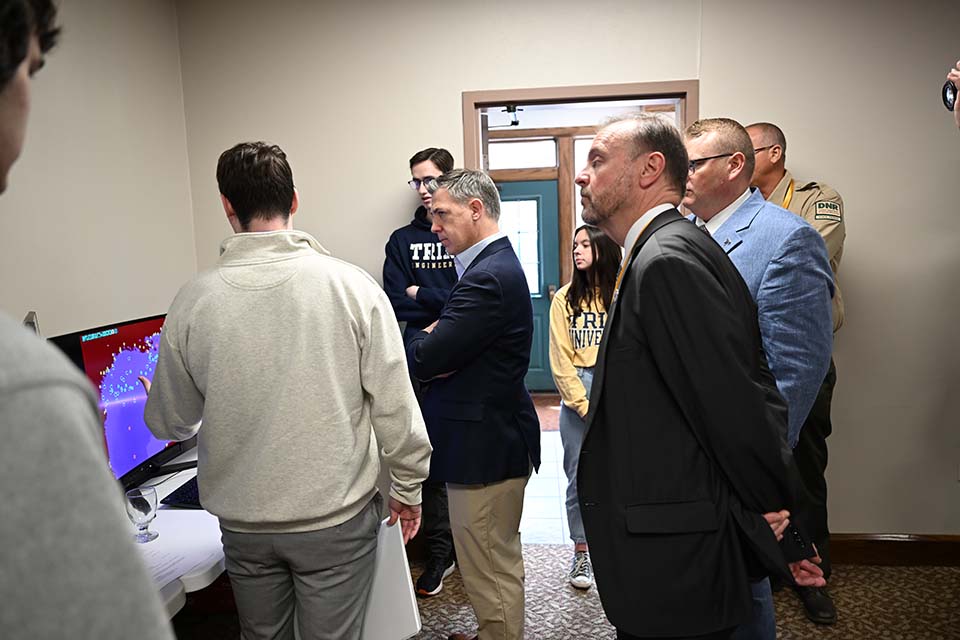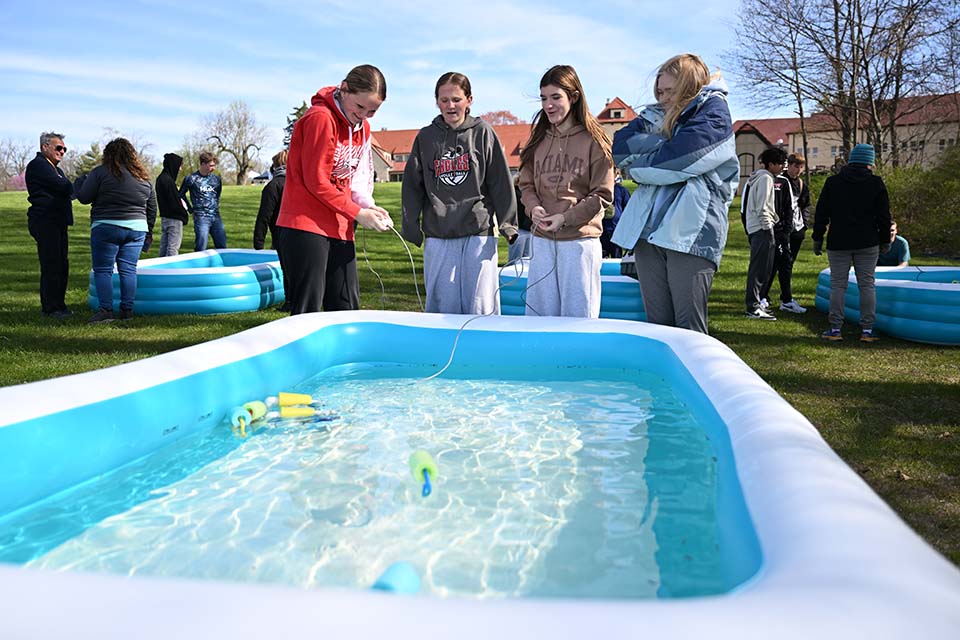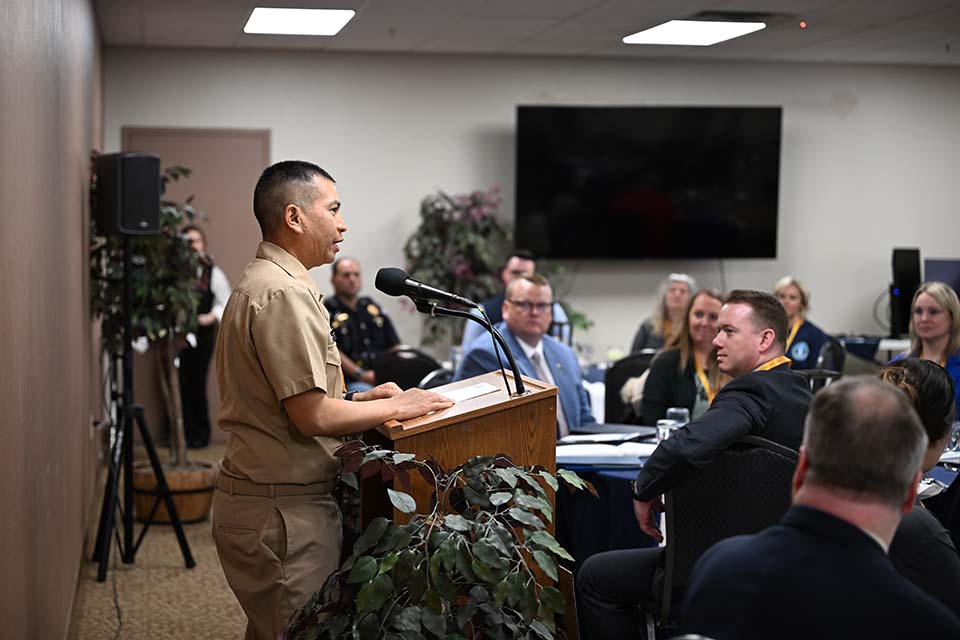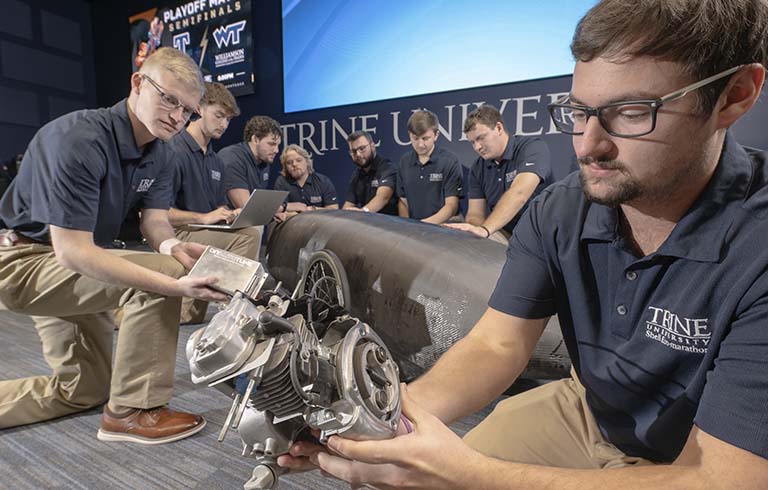The first Artificial Intelligence Maritime Maneuver Indiana Collegiate Challenge (AIMM
ICC) may have been competitive, but everyone came away a winner.
Trine University and Naval Surface Warfare Center Crane Division (NSWC Crane) hosted
the inaugural event from April 26-28 at Pokagon State Park. Six Indiana colleges and
universities competed to see whose artificial intelligence-guided low-profile vessel
(LPV) could best complete a series of tasks.
AIMM ICC not only allowed the students to work on a real-world challenge with potential
applications for rescue and drug interdiction, it provided the opportunity to network
with defense contractors.
In addition, about 130 area high school students attended the event to learn more
about the projects and participate in STEM activities.
“Our state is leading the way in defense innovation and manufacturing,” said Rep.
Jim Banks (IN-3rd), who sponsored funding for the partnership between Trine and NSWC Crane. “Programs
like AIMM’s collaboration between Trine University and Crane are not only important
for strengthening our national defense, but for attracting and retaining the best
minds from around the country to study and work right here in Indiana.”
“For the United States to maintain technological superiority, the U.S. Navy must seek
out diverse input from a variety of sources, which includes academic partners like
Trine University and all of our academic participants,” said Capt. Rex Boonyobhas,
NSWC Crane Commanding Officer. “Maintaining this technological edge ensures Americans
and our allies can enjoy the freedoms that come along with the freedom of the seas,
like maintaining safe trade and travel while also providing security to undersea cables
that provide 90 percent of transcontinental internet traffic.”
“It was great to see how the initial vision of AI for Maritime Maneuver played out
with success at Pokagon State Park,” said Dan Cabel, deputy assistant secretary of
defense for prototyping and experimentation. “The teams took on the challenge and
made the vision a reality in a short time frame; true teamwork and collaboration.
Seeing what the universities developed in such a short time frame was a true testament
to what we do in the Department of Defense — rapid response development and experimentation.
This experience is value added in our future DoD workforce."
“What we're really working toward is opening up a pathway for young individuals to
see how making an impact for our nation's defense can be an exciting opportunity and
career path,” agreed Jason Blume, assistant vice president for Trine innovation1.
At the top
In the competition itself, Trine University and the University of Notre Dame split
first and second places between the four categories.
Trine took top honors in the technical design report and project presentation. The
Thunder finished second in the course challenge and overall grand champion.
The other competing schools were Indiana University, Purdue-West Lafayette, Purdue-Fort
Wayne and Rose-Hulman Institute of Technology.
“Students demonstrated their expertise on a wide range of technologies,” said Andrea
Mitofsky, Ph.D., professor of electrical engineering. “They designed and wired the
electrical system to propel the boat. They planned out, performed stability analysis
on and built a crane for picking objects out of the water. They developed and implemented
a communication system using Bluetooth technology to communicate between the boat,
a device on shore and a sensor buoy they designed and deployed. They also developed
a neural net for image recognition of the different colored buoys on the course.”
“All of these technologies came together into their one successful boat.”
Trine University’s success in AIMM ICC went far beyond what happened over one weekend.
AIMM ICC began as a cooperative effort between NSWC Crane and the university, launched
by Banks’ funding initiative. A team of Trine students worked with Crane to develop
and manufacture the LPVs each university used for the competition, while a second
team built a lab on campus to develop the AI controller.
As a result of their work on the project, five Trine students have been offered and
accepted full-time positions with NSWC Crane after graduation.
“Our students have benefited greatly from their work with Crane,” said John Shannon,
Ph.D., Trine University president. “They been able to work on real national defense
problems, help work toward solutions and, in the process, gain valuable experience
to help prepare them for future career success.”
Ongoing efforts
Those involved with AIMM ICC said they are looking forward to its future growth and
the innovation fueled by the competition.
“Our goal with participation was to inspire, engage, and educate the next generation
of problem-solvers who will tackle some our nation’s toughest challenges,” said Capt.
Boonyobhas. “We hope to see the event grow every year to provide opportunities for
more and more students to engage with science, technology, engineering, the arts and
mathematics.”
“This is just the beginning of something I'm convinced is going to last for a long
time to come,” said Banks. “I'm looking forward to doing whatever I can to support
this partnership.”
“I was impressed to see the level of camaraderie and sportsmanship shared between
all of the competing schools,” said Blume. “We emphasized from the beginning that
yes, this was a competition, but each team was truly competing against the challenges
set before them. The focus of AIMM was to advance design and programming for AI among
our peer Indiana schools and to drive AI forward for the Department of Defense.”
“I solidly believe that the more than 70 faculty and students who participated in
the inaugural AIMM ICC all grew professionally and learned how to design for real-world
situations they will encounter in their professional careers. This was an outstanding
showcase of how Indiana’s hard-working students can meet and address challenges that
are evolving for our nation’s defense.”
The Office of Naval Research, the Applied Research Institute and Follet Bookstore
sponsored the event.
